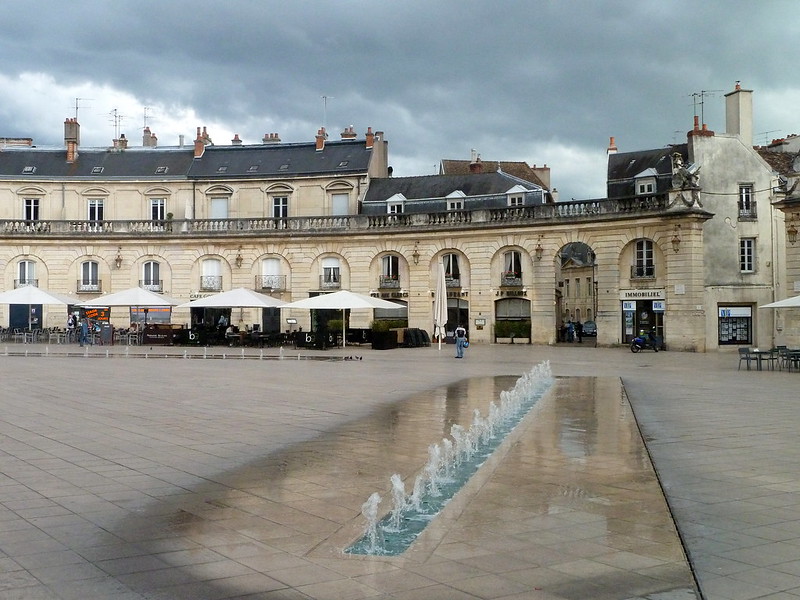There are many places to visit in this Burgundy city. Its historical monuments include the Musee des Beaux-Arts, the Place de la Liberation, the Tour Philippe le Bon, and the Owl’s Trail. The following are some places you may not know about. Read on for a quick overview of the top attractions in Dijon. After reading this article, you should have a good idea of what to expect when you visit this region.
Musee des Beaux-Arts de Dijon
The Musee des Beaux-Arts in Dijon houses an impressive collection of paintings. The works here include those of Ambrogio Lorenzetti, Broderlam Melchior, and Robert Campin, the renowned master of Flemalle. Rubens and Verrocchio also feature prominently. The collection is also home to works by Eugene Boudin, Juan Gris, and Georges Rouault.
The museum’s first permanent collections were donated by the Ecole de Dessin. In 1775, Dijon established the Prix de Rome, which sent two of its art students to Rome for four years. These artists returned with their creations to furnish the school. Some of their works were copies of Old Masters and classical sculptures. In the 1780s, a new east wing was added, where the museum showcased Italian copies.
The Musee des Beaux-Arts in Dijon is one of the oldest and most lavish museums in France. It was opened to the public in 1787 and has amassed over 130,000 works of art. It is one of the largest museums in France and features art from nearly every century. There are collections ranging from ancient Egypt to contemporary European paintings. The museum is an excellent place to experience the history of European art.
Place de la Liberation
The historic center of Dijon is dominated by the Place de la Liberation. The Palais des Ducs de Bourgogne stands atop an elegant and imposing structure. It was built on the foundations of archeological remains and is a stunning example of the use of water to create architectural coherence. This square is the epitome of Dijon life, with a vibrant atmosphere.
The square is a semicircle surrounded by fountains and important buildings. The monuments and statues add a majestic air to the place, making it a must-see for any visitor to Dijon. The square has a pedestrianized area, making it easy to explore. Whether you want to relax or take in the history, the Place de la Liberation is worth a visit. You won’t regret it.
Located on the Place de la Liberation, you can walk down the narrow streets of the old town, stopping by cafes, boutiques, and bistros. Don’t forget to visit the Museum of Fine Arts Dijon, a prestigious museum that features around 130,000 works of art. Its centerpiece is a large palace hall in the Flamboyant Gothic style, containing the tombs of the Dukes of Burgundy. The museum is open to the public and offers many activities year-round.
Tour Philippe le Bon
If you haven’t already, don’t miss the opportunity to climb the 316 steps to the top of Tour Philippe le Bon in Dijon France. This tower dates back to the 1450s-1460 and offers an unparalleled view of the city. It’s a perfect way to spend an afternoon while in Dijon, France. Located just off the town center, it’s easy to get lost in the city, but if you’re looking for something a bit more historic, the Tour Philippe le Bon is the way to go.
This 316-step tower dominates the Place de la Liberation and the Palais des Ducs de Bourgogne. The spire’s blue light gives you a panoramic view of Dijon, even Mont Blanc. This tower is illuminated at night, and the view from the top is worth the climb! It’s important to note that you need to be in good shape to climb the tower, so be sure to bring the appropriate gear.
Owl’s Trail
You can walk the Owl’s Trail in Dijon, France to learn about the area’s history and culture. You can also see the stone owl, carved into the exterior of Notre-Dame Church, which is said to grant wishes when stroked. In this part of France, you can even find a winery that is named after the owl. Owls are known to have magic powers, and you can even make them come true by touching them!
The Owl’s Trail is marked with brass plaques in the sidewalk. The larger ones are keyed to the trail’s number and often have descriptions of the sites they mark. You can purchase a guide at the Tourist Information Office to complete the Owl’s Trail. The guide features information on each of the 22 stops along the way, as well as special points of interest for kids. While you’re walking the Owl’s Trail in Dijon France, be sure to stop at the cute Hotel de la Cloche.
Once you’ve done this, you can move on to the Owl’s Trail, also known as the Parcours de la Chouette, which winds through the old town. The Owl’s Trail takes you past 22 historic monuments and includes suggestions for three additional loops. Along the way, you can also visit the Porte Guillaume, an eighteenth century arch, or the ornate noble houses along the Rue des Forges.
Palace of the Dukes
The palace of the Burgundian Dukes, also known as the Ducal Palace, is located in the city center. It was built to demonstrate the power and influence of the dukes. The palace has since been converted to a city hall and includes administrative offices. It is also home to the Philippe le Bon tower, which offers a panoramic view of the city. Built on the site of a Gallo-Roman fortress, the palace is an important symbol of power and authority in the city.
A visit to the Palace of the Duchess in Dijon France will provide you with an understanding of the rich history of the city. The Palace is home to a museum of fine arts, where you can see many pieces of artwork and learn about the city’s history. While it may not be easy to understand the history of the palace, it’s a fascinating place to spend a day or even a weekend exploring the city’s architectural splendor.
Paroisse Notre-Dame De Dijon
The Paroisse Notre-Dame de Dijon is a cathedral in the city of Dijon, France. The building was originally built on the site of an earlier chapel, which was outside the city walls. The chapel was rebuilt in Romanesque style around 1150. The structure was designed in such a way that it could be located in the city’s main square and used novel techniques, such as putting the roof on pillars. This allowed for maximum floor space.
The eglise Notre-Dame de Dijon is one of the finest examples of XIIIe siecle gothic architecture. Located in Dijon’s safeguard sector, it is close to the State of Bourgogne and Palais des Ducs. The edifice, which is not too large, features a statue of Notre-Dame de Bon-Espoir, which was formerly called the Vierge noire.
Cathédrale Saint-Bénigne de Dijon
The Cathedrale Saint-Bénigne de Dijon is one of the most beautiful buildings in the city. It was built in the Gothic style between 1280 and 1325. After the French Revolution, it was made the seat of the Bishopric of Dijon. The building is built over the remains of Saint Benignus, who was a Christian missionary in Burgundy in the third century. His remains were placed in a crypt by Saint Gregory of Langres in 511. In 535, he completed the basilica Cathedral and placed it atop the crypt.
The cathedral’s edifices and monuments are an important part of Bourgogne’s history. The Bourgogne Cathedral is one of its most famous gothic buildings. The Cathedrale Saint-Bénigne de Dijon is an important ecclesiastical site. The Gothic-style building was built on the site of a 9th-century evangelistary. Its interiors were later renovated by the Abbey of Cluny.
Parc de la Colombiere
If you’re visiting Dijon, you must check out the large historical park, Parc de la Colombiere. It has French gardens, tree-shaded paths, and Roman road remains. This is the perfect place for families to spend the day. You can even take your dog for a stroll. In addition, this park is free. We’ll cover a few of the highlights here. This park is located in the heart of Dijon, so you may be surprised at the variety of things to do and see there.
One of the best parts of Parc de la Colombiere is that it is an Ecojardin-labeled park. The park is surrounded by allees lined with marronniers. The park is 33 hectares of greenery, and is also home to an arbore. In addition, it includes a gazebo, fountain, and arbore. The park is popular amongst the city’s students and residents.

